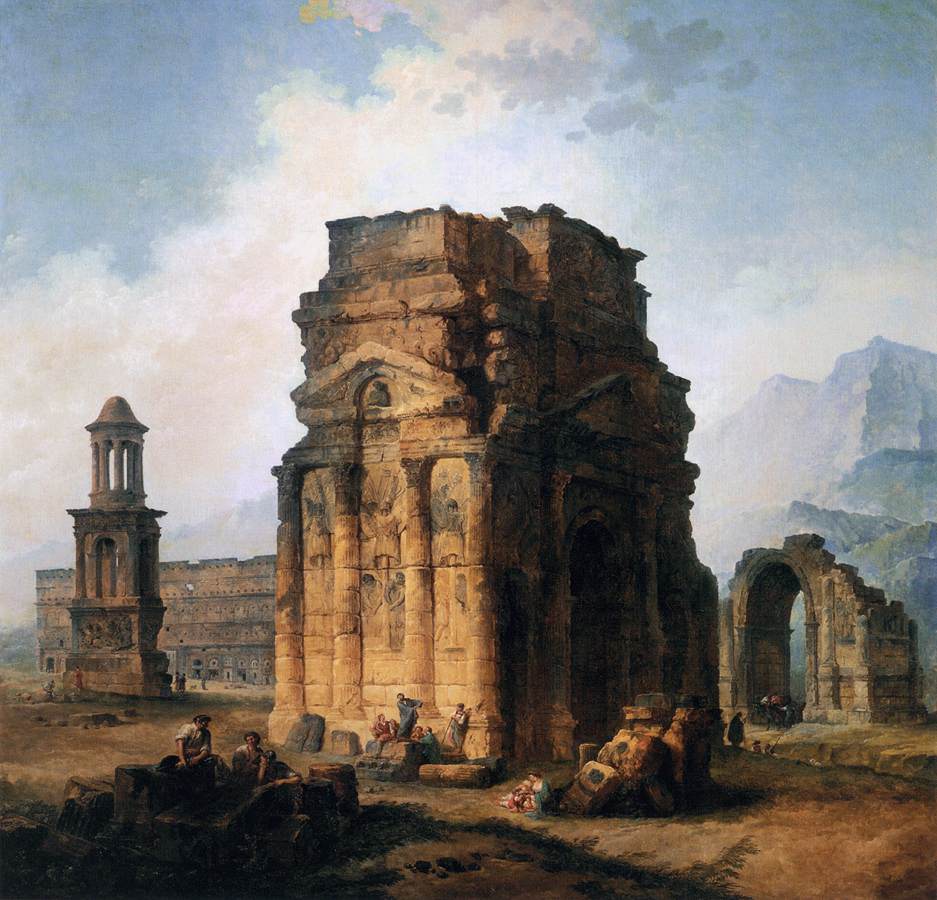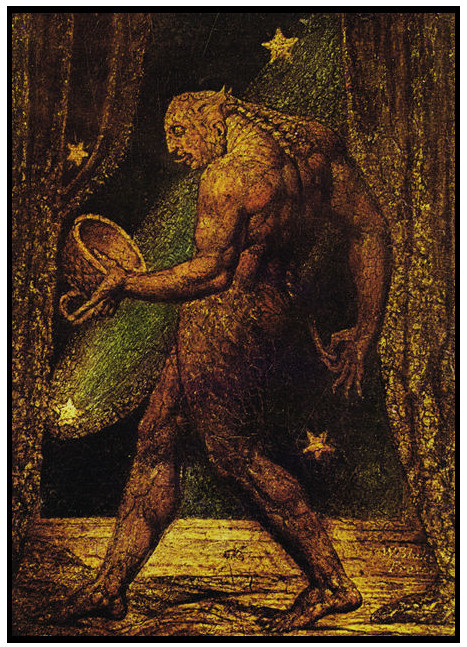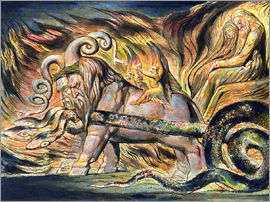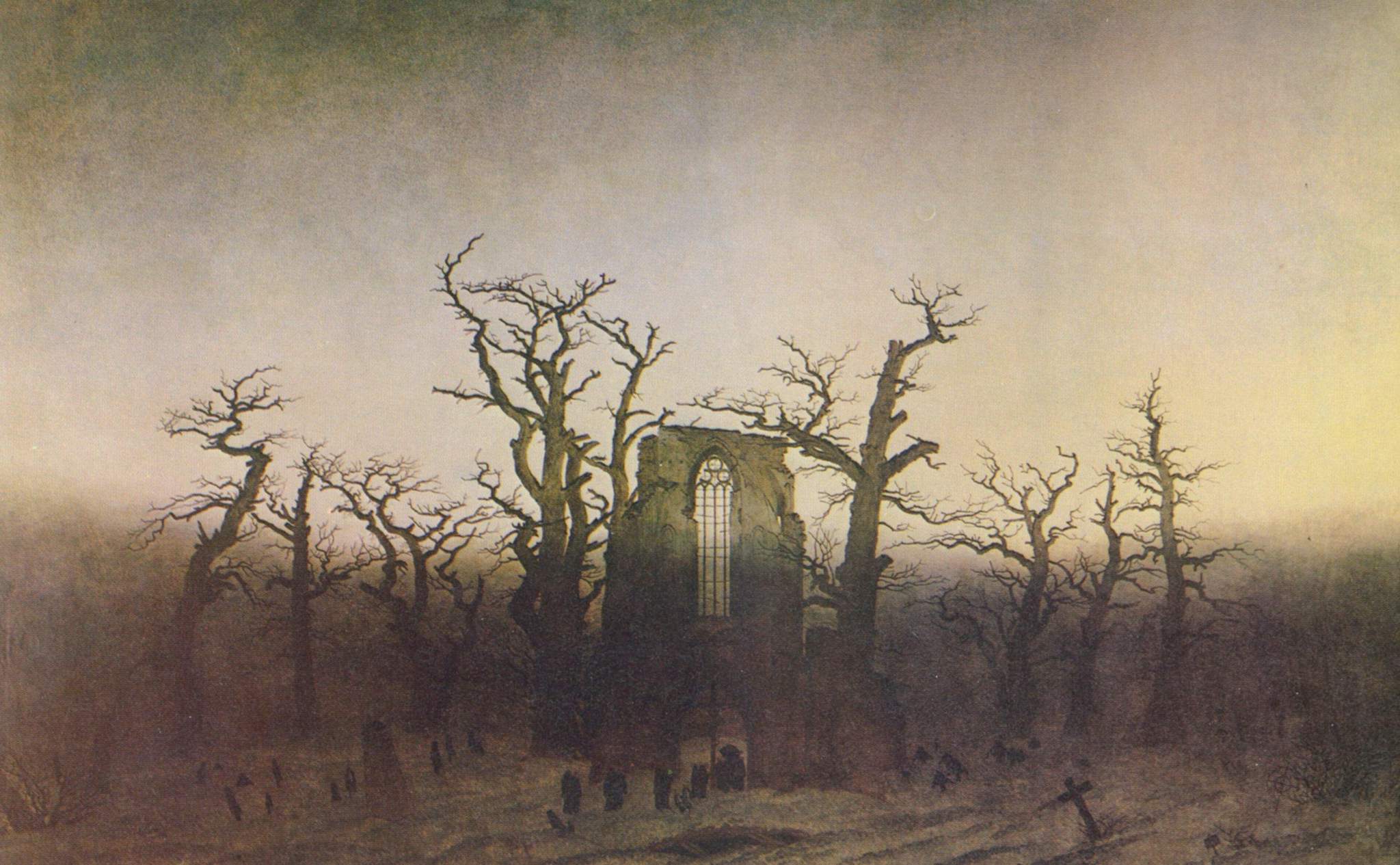Hubert Robert (1733-1808): Took the notes from one of Piranesi's unfinished campaigns and ran with them, eventually developing them into his own distinctive 'ruinworld' setting. His games are much more mellow than Piranesi's, whose version of D&D always seem to devolve into paranoiac nightmare fuel after a couple of sessions.


Francisco De Goya (1746-1828): Runs super-disturbing, ultra-violent horror games. Widely agreed to 'have issues'. Keeps 'accidentally' traumatising his players. Most of his games end in TPKs.
.jpg)

William Blake (1757-1827): The games he runs are super-weird. Once ran seven sessions set in a world inside the heart of a possibly-imaginary guy that the PCs met after Satan invaded their back garden. His players are very, very confused, but the freaky monsters make up for a lot.


Caspar David Friedrich (1774-1840): Loves wilderness adventures. Claims that all the weird and creepy stuff in his games is 'symbolic'. Won't tell anyone what it's supposed to be symbolic of.



| This one is his Fall of Babylon, which really has to be seen full-sized to be believed. (Those tiny white blobs near the middle? Those are war elephants.) You can see a big version here. |
(Reserved for a possible sequel: Joseph Gandy, Samuel Palmer, Eugène Delacroix, John Flaxman, JMW Turner, Benjamin West.)
Hogarth only does city books. One of those writers where everyone has a funny name and neatly fits one stereotype or another.
ReplyDelete'The Rake's Progress' is like watching someone roll their way through a lifepath character generation system while suffering from really, really bad luck. They start off with a promising young aristocrat, and eight dice-rolls later they're stuck with a naked penniless lunatic, instead...
DeleteEpic post! How about Thomas Cole? The Titan's Goblet is just begging to be an adventure setting.
ReplyDeleteHey, good suggestion! I don't know much of the American art of the period, so thanks for the tip!
DeleteI couldn't resisting making one for Cole:
DeleteThomas Cole, DM
It focuses on his European landscapes & more fantastical works.
If Goya was my buddy, I would not let him DM. He can keep playing his multiclass bard/fighter half elf, sure, but he does not get to call the shots.
ReplyDeleteI think that would be an extremely sensible decision. Otherwise things would probably get really creepy really fast.
DeleteVery clever and a great bunch of artists. Can we see surrealists next?
ReplyDeleteHm! Max Ernst's 'Une semaine de bonté' is actually a big influence on how I imagine the Wicked City, spiritually if not visually.
DeleteMaybe I should just stomp forwards through history, one artistic movement at a time...
Excellent post!
ReplyDeleteThanks! And thanks for commenting, and thus giving me a chance to discover your blog. With the volume of OSR material out there, the more judicious reviewers we have, the better!
DeleteGéricault runs really grim WFRP-style campaigns where every NPC is dark and brooding if they're not horrible. If you buy or even see a horse he stops the game for 2 minutes to roll all its traits and characteristics up on a table of his own devising.
ReplyDeleteI like that Friedrich but Martin FTW.
ReplyDeleteI KNOW RIGHT
DeleteFun fact: the Brontë siblings decorated their living room at Haworth Parsonage with John Martin prints. So if you've ever wondered what Emily was looking at while writing 'Wuthering Heights', well, now you know!
Blake told me in a rare vulnerable moment that he believed HE was the Heart of Satan, and we were all inside HIM...
ReplyDeleteStill got some kick-ass loot, though: A grain of sand that let you see AN ENTIRE WORLD!
That flower that lets you look into heaven is a total trap item, though.
DeleteHEAVEN LOOKS BACK.
Well done. My hat is off to you.
ReplyDeleteThanks! And I like the Callot post you wrote on your blog in response. I think I've seen all those images at one point or another, but never realised that they were all by the same artist...
Deletevery clever!
ReplyDeleteYou should check "L'ange du bizarre. Le romantisme noir de Goya à Max Ernst", an exhibition that happened in 2013 at Orsay museum in Paris, lots of good stuff here
ReplyDeleteWow. There's an exhibition I'd like to have seen. I'll have to see if I can get hold of the catalogue!
DeleteMartin is the best, indeed.
ReplyDeleteI really love this post (and the sequel). It's a really fun thought experiment.
ReplyDeleteHowever, I think one of the pics here is misattributed. Isn't the first pic for Friedrich actually Johan Christian Dahl's View of Dresen By Moonlight? It mean it IS similar to some of Friedrich's paintings, but I'm pretty sure it's Dahl's.
Ack! You're quite right! (This is where incautious use of Google Image Search will get you, kids.) I've swapped it with Friedrich's 'Chasseur im Walde', instead.
DeleteOn the plus side, this has introduced me to the works of Johan Christian Dahl...
Hi! This text is awesome! Would you allow me to translate it to portuguese? (with all due credits, of course!)
ReplyDeleteSure - go ahead!
DeleteBy way of approaching things from the critical end of the artistic world, I put together this....http://worldbuildingandwoolgathering.blogspot.co.uk/2017/03/john-ruskin-rolls-up-character.html
ReplyDeleteI had a lot of fun reading this, J. Manola, so I had to write my own version.
ReplyDelete"Czech Early 20th Century Artists as DMs - Inspired by Against the Wicked City"
https://zrzavy.blogspot.com/2017/11/czech-early-20th-century-artists-as-dms.html
Nice! Imitation is the sincerest form of flattery, after all...
Delete